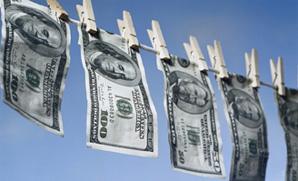Surface of Currency
Bills
Introduction
Physical Conditions?
The surface of a dollar bill is surprisingly a very hospitable environment for microorganisms. A dollar bill will change hands many times before it is destroyed, and during that journey, there is a very high likelihood that the dollar will pick up bacteria from the environment. The surface of a dollar bill is not smooth - it is in fact very fiberous, with many pits and nooks that allow colonies to germinate and grow. The environment of a dollar bill is dependent on where the dollar is located - in a wallet, a cash register, a purse, or even the brief moments that it comes in contact with human skin.
Influence by Adjacent Communities (if any)
Is your niche close to another niche or influenced by another community of organisms?
Conditions under which the environment changes
Do any of the physical conditions change? Are there chemicals, other organisms, nutrients, etc. that might change the community of your niche.
Who lives there?
Which microbes are present?
You may refer to organisms by genus or by genus and species, depending upon how detailed the your information might be. If there is already a microbewiki page describing that organism, make a link to it.
Do the microbes that are present interact with each other?
Describe any negative (competition) or positive (symbiosis) behavior
Do the microbes change their environment?
Do they alter pH, attach to surface, secrete anything, etc. etc.
Do the microbes carry out any metabolism that affects their environment?
Do they ferment sugars to produce acid, break down large molecules, fix nitrogen, etc. etc.
Current Research
Enter summaries of the most recent research. You may find it more appropriate to include this as a subsection under several of your other sections rather than separately here at the end. You should include at least FOUR topics of research and summarize each in terms of the question being asked, the results so far, and the topics for future study. (more will be expected from larger groups than from smaller groups)
References
Edited by [Brian Sun, Christopher Tom], students of Rachel Larsen



